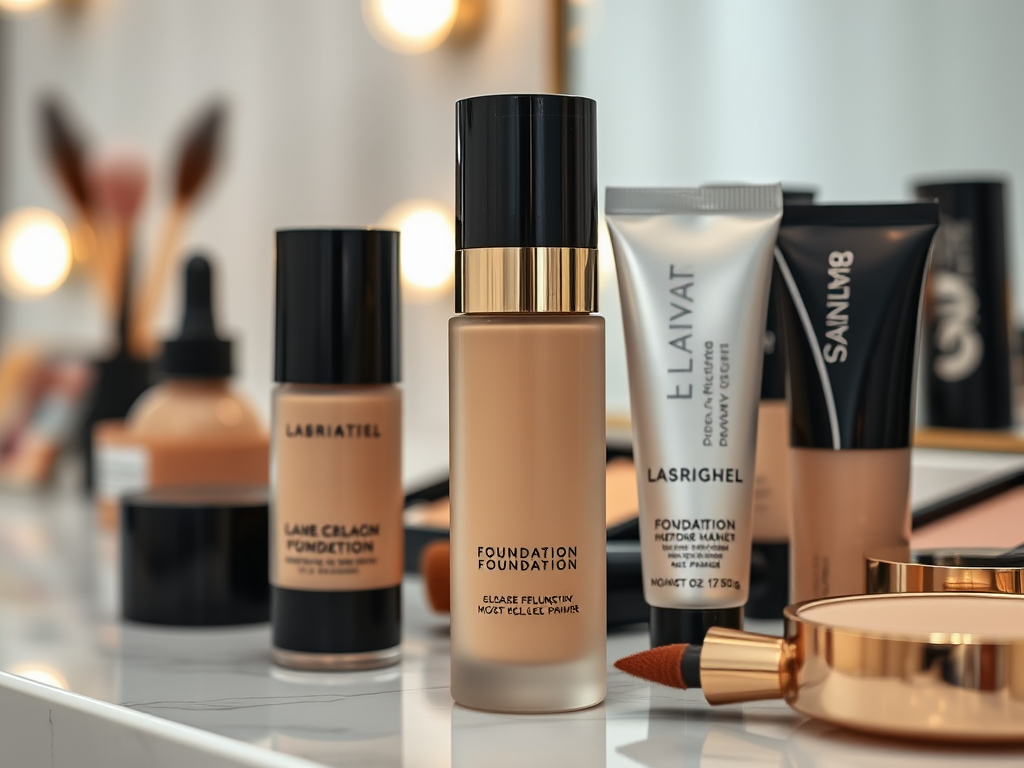
Tips for Applying Foundation on Dry Skin: Avoiding Cakiness
Applying foundation on dry skin can be a daunting task, often leading to frustrating results like cakiness and uneven texture. The challenge lies in navigating the unique needs of dry skin, which can easily absorb moisture from foundation, magnifying its imperfections. Fortunately, achieving that flawless look is possible with the right approach. By knowing how to prep your skin, choose suitable products, and use effective application techniques, you can say goodbye to cakey foundation for good. This article offers valuable insights and practical tips to help you master makeup application for dry skin.
The foundation is meant to enhance your natural beauty, yet it can sometimes become an enemy rather than a friend for those with dry skin. Many individuals experience an endless cycle of chasing hydration but facing makeup-related challenges. Recognizing the impact of products and techniques on your complexion is essential in this journey. Here, you will find comprehensive strategies that can make a significant difference in your makeup routine. Let’s delve straight into how to obtain a flawless finish that seamlessly blends into your skin.
Understanding Dry Skin

Dry skin has its own set of characteristics, which may include flakiness, rough texture, and a lack of moisture. It is vital to understand these traits to adjust your makeup routine effectively. When you apply foundation without addressing these issues, you risk emphasizing dryness instead of creating a smooth canvas. This often results in an undesirable, cakey appearance. Understanding what works for your skin type can lead to a more confident makeup application.
Preparing Your Skin

Just like painting on a canvas, preparation is key to achieving a stunning result. Prioritizing skin prep before makeup application can unlock the true potential of your foundation. The better you prep your skin, the smoother your foundation will glide on. Here are essential steps to follow for preparing your skin:
- Cleansing: Use a gentle, hydrating cleanser to avoid stripping your skin of moisture.
- Exfoliating: Regularly exfoliate with a mild product to remove dead skin cells without causing irritation.
- Moisturizing: Apply a rich moisturizer packed with hydrating ingredients for a soft canvas.
These steps are crucial for ensuring that your foundation adheres properly and provides the desired finish.
Choosing the correct foundation is more than just picking a color; it’s about selecting a formulation that complements dry skin specifically. Liquid and cream foundations often work best, providing the hydration that powder foundations typically lack. Always look for ingredients that reflect moisture, such as hyaluronic acid and glycerin. These elements can transform your appearance from dull to radiant. Here’s a brief overview of what to look for when selecting a foundation:
| Foundation Type | Properties |
|---|---|
| Liquid | Hydrating, lightweight, and easy to blend. |
| Cream | Full coverage, perfect for masking dry spots. |
| Stick | Convenient, travel-friendly option for touch-ups. |
Application Techniques
How you apply foundation has a significant impact on achieving a flawless look. Using the right tools can determine if your makeup enhances your natural beauty or reveals flaws. It’s crucial to understand your options when it comes to application methods. Below are effective techniques that can help you achieve that coveted, smooth finish:
- Damp Makeup Sponge: A damp sponge creates a seamless blend and minimizes the appearance of dryness.
- Foundation Brush: Opt for a brush designed for liquid foundation to ensure an even application.
- Fingers: Sometimes, using your fingers can give you the warmth needed for a better blend.
Layering is another important technique. For best results, start with a small amount of product and gradually build coverage as needed. This method helps to prevent the foundation from sinking into dry patches.
Setting Your Makeup
Finishing touches are just as important as the initial application. Setting your makeup correctly ensures a polished look that lasts throughout the day. The right techniques can make your makeup look fresh and vibrant rather than dull or cakey. Consider these tips for setting your foundation on dry skin:
- Hydrating Setting Sprays: Use these to meld your foundation with the skin and boost moisture.
- Skip the Powder: If you must use powder, opt for a hydrating formula and apply it lightly.
- Touch-ups: Keep a setting spray or facial mist on hand for quick refreshes throughout the day.
Conclusion
Applying foundation on dry skin doesn’t have to be overwhelming. By employing effective preparation, selecting the right products, and mastering proper application methods, you can achieve a beautiful finish without the dreaded cakiness. Each component from cleansing to setting your makeup plays a vital role in creating a natural, radiant look. As you embrace these tips and techniques, you are more likely to enjoy the process of makeup application, boosting your confidence in the process.
Frequently Asked Questions
- What type of moisturizer should I use before foundation? Look for a rich, hydrating moisturizer that contains ingredients like hyaluronic acid or glycerin.
- Can I use powder foundation on dry skin? While it’s best to avoid powder foundations, if necessary, choose a hydrating formula and apply it lightly.
- Is primer important for dry skin? Yes, a hydrating primer can help fill in dry patches and provide a smoother surface for foundation.
- How can I fix cakey foundation after application? Try spritzing a hydrating setting spray to refresh your skin and blend the foundation into a more natural finish.
Reading time 6 minutesApplying foundation on dry skin can be a daunting task, often leading to frustrating results like cakiness and uneven texture. The challenge lies in navigating the unique needs of dry skin, which can easily absorb moisture from foundation, magnifying its imperfections. Fortunately, achieving that flawless look is possible with the right approach. By…